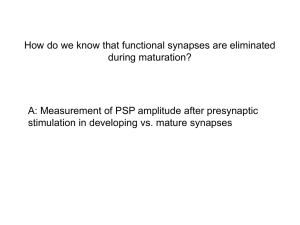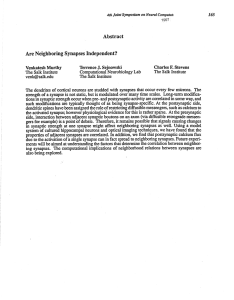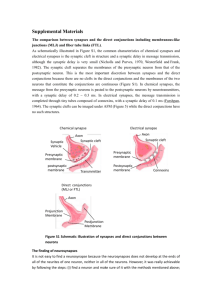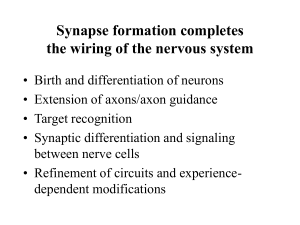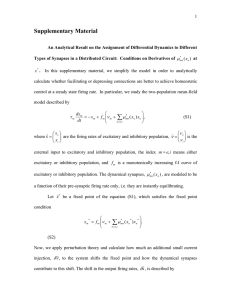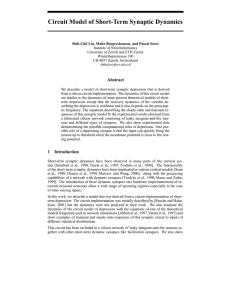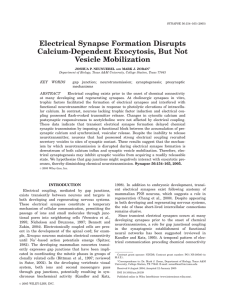Lecture 2 -- Cytology of the Neuron -- Bailey
advertisement
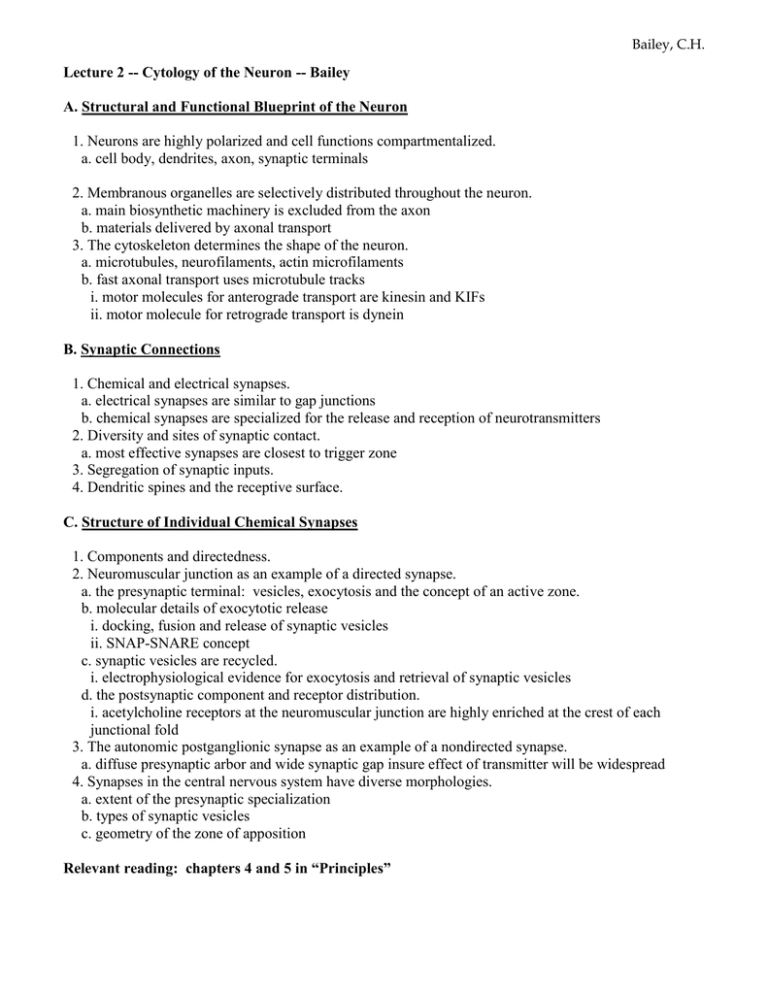
Bailey, C.H. Lecture 2 -- Cytology of the Neuron -- Bailey A. Structural and Functional Blueprint of the Neuron 1. Neurons are highly polarized and cell functions compartmentalized. a. cell body, dendrites, axon, synaptic terminals 2. Membranous organelles are selectively distributed throughout the neuron. a. main biosynthetic machinery is excluded from the axon b. materials delivered by axonal transport 3. The cytoskeleton determines the shape of the neuron. a. microtubules, neurofilaments, actin microfilaments b. fast axonal transport uses microtubule tracks i. motor molecules for anterograde transport are kinesin and KIFs ii. motor molecule for retrograde transport is dynein B. Synaptic Connections 1. Chemical and electrical synapses. a. electrical synapses are similar to gap junctions b. chemical synapses are specialized for the release and reception of neurotransmitters 2. Diversity and sites of synaptic contact. a. most effective synapses are closest to trigger zone 3. Segregation of synaptic inputs. 4. Dendritic spines and the receptive surface. C. Structure of Individual Chemical Synapses 1. Components and directedness. 2. Neuromuscular junction as an example of a directed synapse. a. the presynaptic terminal: vesicles, exocytosis and the concept of an active zone. b. molecular details of exocytotic release i. docking, fusion and release of synaptic vesicles ii. SNAP-SNARE concept c. synaptic vesicles are recycled. i. electrophysiological evidence for exocytosis and retrieval of synaptic vesicles d. the postsynaptic component and receptor distribution. i. acetylcholine receptors at the neuromuscular junction are highly enriched at the crest of each junctional fold 3. The autonomic postganglionic synapse as an example of a nondirected synapse. a. diffuse presynaptic arbor and wide synaptic gap insure effect of transmitter will be widespread 4. Synapses in the central nervous system have diverse morphologies. a. extent of the presynaptic specialization b. types of synaptic vesicles c. geometry of the zone of apposition Relevant reading: chapters 4 and 5 in “Principles”


